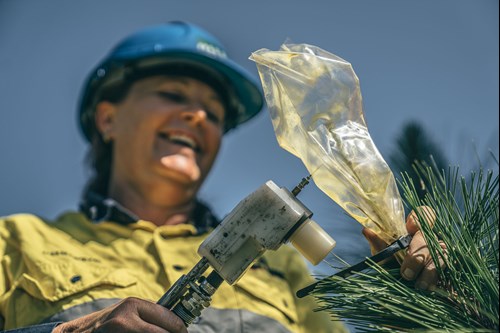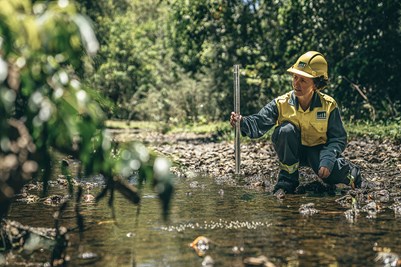The cutting edge of modern forestry
We invest in a mix of short, medium and long-term research to increase plantation productivity and value, enhance sustainability and minimise risk.
We are a member of a number of research consortiums, such as the Forest and Wood Products Association, the Forest Pest Management Research Consortium and the National Sirex Committee, and we maintain strong network ties to a number of university and government research providers.
 Genetic improvement
Genetic improvement
With more than 100 years of genetic research experience, we are leaders in our field.
Our science team is committed to softwood plantation tree improvement, focusing on traits like volume, stem straightness, branching, wind firmness and wood quality, as well as selecting trees that can adapt to increasing climatic variability including frosts and drought.
Through a process known as the breeding cycle, the progeny of the best trees are tested across different environments, and then the very best of these performers are deployed in our production seed orchards as well as cycled back into the breeding cycle to enable continuous genetic improvement.
Silviculture
Another important aspect of our research focuses on how to best prepare and manage our forests to maximise the potential of our genetically superior seedlings. We rigorously test and trial a range of short to long-term responses to treatment, taxa and site combinations, including site preparation, fertiliser and weed control and thinning regimes. This research program provides the basis of our current silviculture treatments.
 Stewardship
Stewardship
We undertake and support research into a variety of stewardship areas, including population surveys of endangered species, rehabilitation of degraded areas and important ecosystems. We also maintain a series of long term trials investigating the impacts and remediation of soil compaction following machine trafficking.
Our extensive forest hydrology research over the last 30 years underpins our current best practices for soil protection, and our monitoring of key watercourses continues through our collaboration with regional Waterwatch networks.
